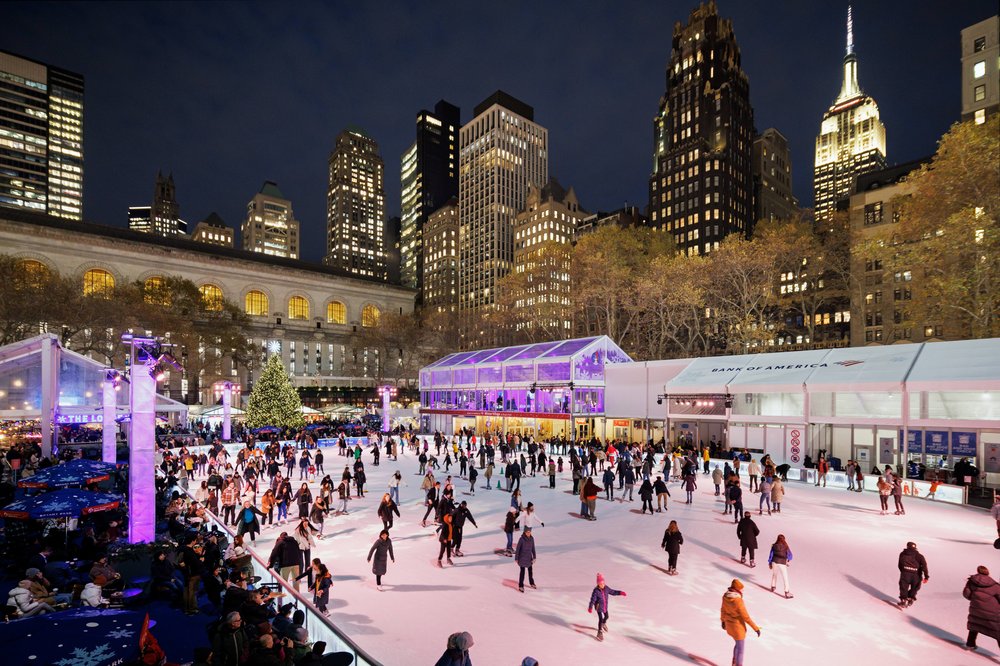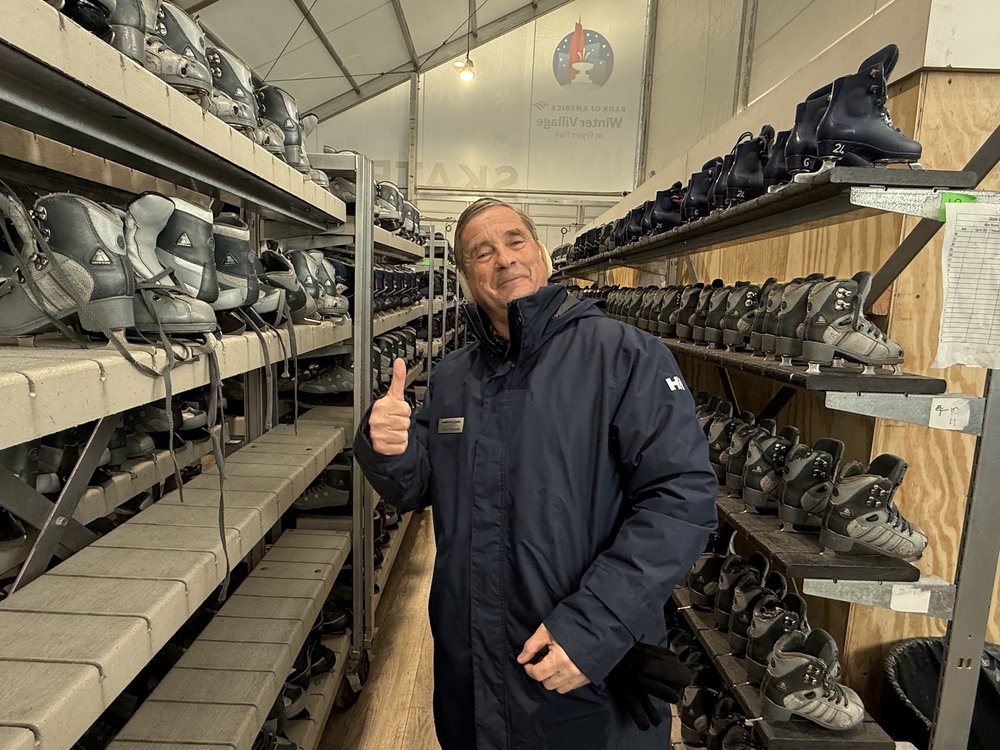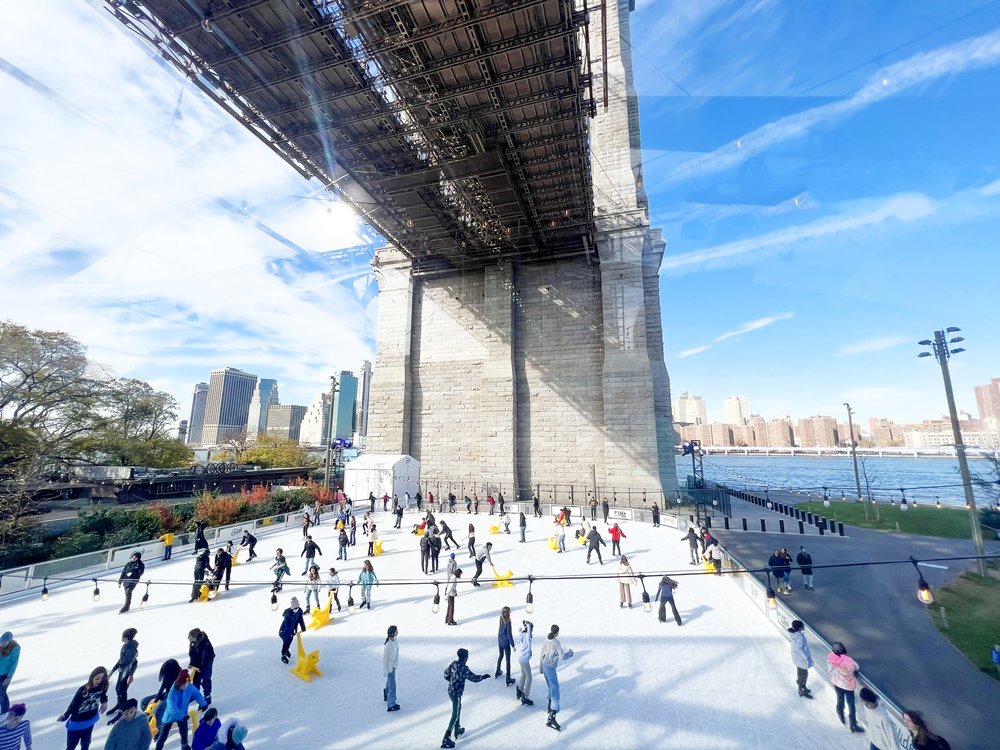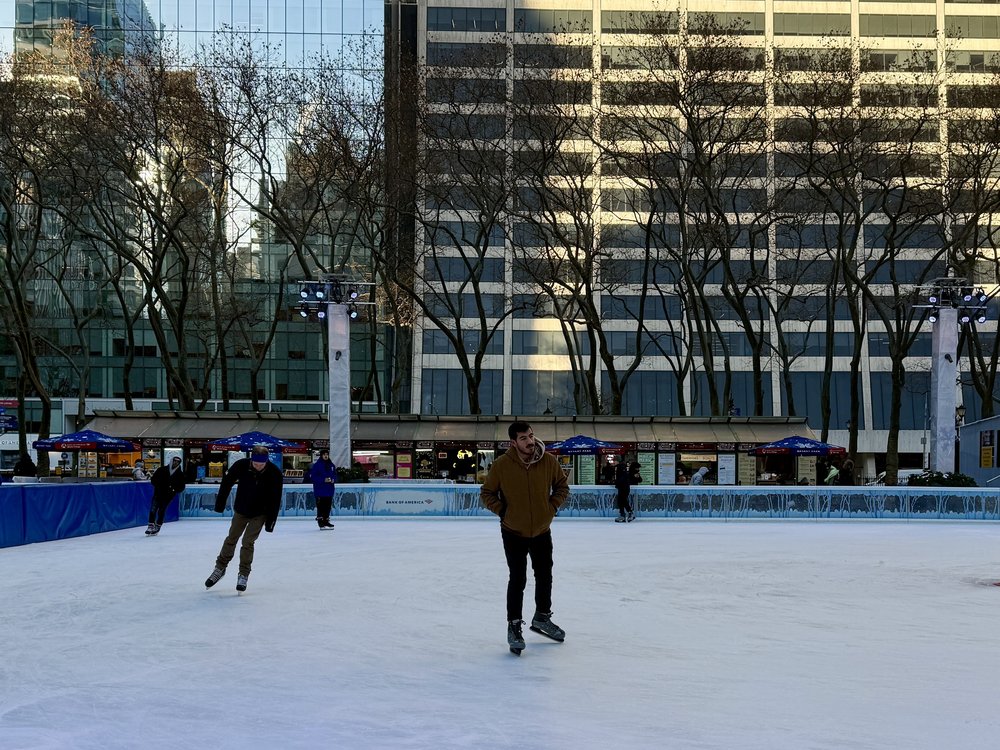That ice skating rink in Bryant Park? It makes millions.
Jan. 24, 2025, 2:05 p.m.
“The perfect day is 40 degrees, sunny and no wind,” said Tom Hillgrove, whose company manages the rink.

A few dozen skaters were on the ice at the outdoor rink at Bryant Park on Wednesday afternoon, despite the freezing cold temperatures. A few slipped unsteadily around the center of the ice, with one young man skating circles around the others at double speed.
The rink welcomes more than 5,000 skaters on its busiest days, according to its operator. That’s roughly 90 skaters every 15 minutes on average — moving through admissions, renting and returning skates, and getting on and off the ice.
“This is a well-oiled machine,” said Tom Hillgrove, president of Rink Management Services, which manages the park’s pop-up rink. This season, he said, Bryant Park had around 10 of those peak days so far.
The business of ice skating in New York City is more than just a seasonal tradition – it’s a crucial driver for the financial health of Bryant Park, Central Park and other iconic spaces.

The revenue from the Bryant Park rink is a windfall for the nonprofit that oversees the park, totaling $8.5 million in the 2022-23 season, according to publicly available financial records. A third of the park’s revenue for the entire year is generated by a few thousand square feet of ice that’s only around for four months a year.
Admission is free, though skate rentals start at around $20 a session.
“The winter activity subsidizes all the free lessons and lectures, the games like pétanque and ping-pong, the Reading Room,” said Dan Biederman, president of the Bryant Park Corporation. “Everything else in Bryant Park is free, except paying for food and paying for a carousel ride.”
The rink is on track for $10 million in revenue this season, he said.
‘The perfect day is 40 degrees, sunny and no wind’
Biederman, who has run the nonprofit since 1980, said that besides the well-known skating locations at Rockefeller Center and Central Park, there weren’t many rinks around when the one at Bryant Park opened in 2005.

Roebling Rink in Brooklyn Bridge Park is a new addition to the city's ice skating options.
But new seasonal ice rinks have proliferated in New York City in recent years, including at Brookfield Place, Chelsea Piers, the South Street Seaport, MetroTech, Manhattan West and the newly opened Roebling Rink in Brooklyn Bridge Park.
“Maybe we were influential,” Biederman said. “When we first did this, we weren’t even sure people would come.”
Admission is free if you bring your own skates, thanks to support from the park’s winter village sponsor Bank of America, Biederman said. But most of the visitors in the busiest few weeks — from Thanksgiving through New Year’s — are tourists, and their skate rentals generate the bulk of the rink’s revenue.
A rainy Christmas week several years ago cut that season’s revenue in half, said Hillgrove, who operates 24 ice rinks around the country, including in Jersey City and at Industry City in Sunset Park.
“The perfect day is 40 degrees, sunny, and no wind,” he said. “I’m a marketing genius on those days. If the weather’s not good, I look like an idiot.”
Building a pop-up rink
Construction for the seasonal rink starts in October, with 20,000 square feet of decking surrounding the ice. Hillgrove points to a sunken grate as the only reason the rink isn’t even bigger.
“That’s one of three escape hatches for the stacks [of the New York Public Library main branch],” Hillgrove said, referring to two stories of climate-controlled book-and-document storage underneath the skaters’ blades.

Ice skaters at Bryant Park on Wednesday when the temperature was 13 degrees.
Two school bus-sized compressors push coolant through 10 miles of pipe underneath the rink 24 hours a day, with an overnight attendant on site to monitor conditions, Hillgrove said. Then workers put more than 50 thin layers of water down, one at a time, before driving a car over the ice to crack and settle it.
Hillgrove is a hands-on operator: His team interviews roughly 700 locals each season to ultimately hire 220 rental attendants, skate guards, Zamboni operators, and more.
His fee for the entire operation, including payroll, is about $300,000. Out of all the park's winter activities, like its holiday market and food hall, the rink provides the bulk of the profits, a spokesperson confirmed.
“It’s a good deal,” Hillgrove said. “We provide a good value.”
Bryant Park takes no public money to support the operation and does not pay any fees to the city, a spokesperson said.
By contrast, the vendor for Central Park’s Wollman Rink, which was built by Robert Moses and opened in 1950, pays the city more than $3 million a year for the right to run it, according to city records.
Wollman Park Partners turns a profit but puts the money back into community programming such as Ice Hockey in Harlem, according to Stacy Shuster, vice president of business development and community affairs. WPP took over operations from the Trump Organization in 2021 and is bidding to renew its contract next year.
Back at Bryant Park, skate supervisor John Carlos Gutierrez points out the young man lapping everyone else on the ice.
“Cicero’s a rink rat,” Gutierrez said, referencing self-taught skaters from New York City, like himself. “I don’t know him too well, but I’m gonna go skate with him today, see what he’s got.”
“If you really wanna see a show, go to Wollman Friday and Saturday nights after 7:30,” he said.
Due to a misstatement from a Bryant Park official, a previous version of this story misstated the total profits of the skate rink.
See all the NYC area nominees for the 2025 James Beard awards The nearly naked Cupid’s Undie Run returns to Manhattan in February